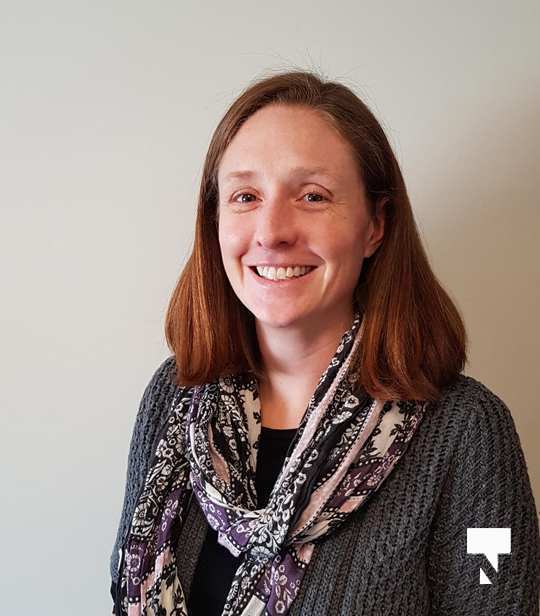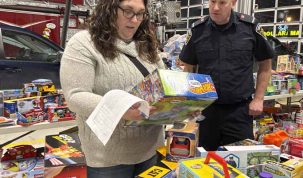By Cecilia Nasmith/Today’s Northumberland
Dr. Natalie Bocking had only an hour or so on Wednesday to evaluate a significant provincial announcement about virtually ending restrictions before giving her 44th media scrum since becoming Haliburton Kawartha Pine Ridge District Health Unit Medical Officer of Health 11 months ago.
And though statistics indicate COVID-19 cases are on the decline, Dr. Bocking reminds everyone that the disease is still among us.
Daily lab-confirmed cases, which recently topped 100 in recent weeks, are now closer to 20 – though Dr. Bocking reminded everyone that this news is the tip of the iceberg because of strict limitations on who can and cannot have rapid-antigen testing (and cases diagnosed through rapid antigen testing are not reported to the health unit).
The test-positivity rate, at 8.8%, is the lowest it has been since late December, though that number was closer to 2% or 3% in previous waves.
“Relatively better – not as low as we would like to see it,” she summed up.
Only two COVID outbreaks are being followed by the health unit, though they are starting to see outbreaks of other respiratory viruses in places like child-care centres and long-term-care homes – “similar to what we have seen in previous waves as public health restrictions ease and people have more contact with each other and we see other respiratory viruses start to emerge,” she said.
The waste-water monitoring in Lindsay and Cobourg continues to show lower levels of viral signals – “not nearly as high as they were in January, but certainly not zero either, but both have been stable for the last two weeks.”
Since Jan. 1, 77 HKPR residents have been hospitalized as a result of COVID-19 to date, with 17 ICU admissions and 30 deaths.
Vaccination “continues to be one of the most important tools we have in our toolbox, preventing serious outcomes associated with COVID-19,” Dr. Bocking said. And a booster dose gives an individual the greatest degree of protection against severe illness, hospital admissions and death.
Of eligible HKPR residents, only 60.6% have the booster, she pointed out.
“We have a slow trickle of people coming in to still get their booster doses. It’s certainly still not too late to get a booster dose if you are eligible – it’s still beneficial, it’s still effective, it’s still an important tool to prevent serious outcomes from COVID-19.”
With mass-immunization clinics closed, health-unit offices in Port Hope and Lindsay will offer the shot Fridays and Saturdays in March on a walk-in basis. School-based clinics will continue to serve the five-to-11-year-olds who have written parental consent for a vaccination, and mobile vaccination clinics will travel around to the region’s rural areas. The school clinics and mobile clinics will continue in April.
By then, things will look quite different, thanks to the announcement by the province of accelerated lifting of public-health measures under the Reopening Ontario Act. Most significantly, mask mandates will be lifted March 21 and the act will expire by the end of March. After a further 30 days, at the end of April, it will no longer be in place.
The province is also removing isolation requirements for any fully vaccinated individual who lives in a household where someone has tested positive. Instead of any isolation period, such an individual would only have to self-monitor.
“One of the main messages continues to be, if you are sick, to stay home,” she said.
Though the criteria to qualify for PCR testing have expanded minimally, Dr. Bocking expects the criteria to remain restrictive. She advises anyone getting a positive reading from a rapid test to accept it as positive. She also advises anyone getting a negative result to confirm it with a second test.
“Wait 24 hours. Don’t go in to work, don’t go to a party. Do another rapid-antigen test. If it’s negative and your symptoms are improving, we assume it’s not COVID-19 and you can resume normal activities.”
Asked how she felt about the end of the mask mandate, she reiterated that “masks are an effective and easy way to slow transmission of COVID-19.
“I think what’s changing is the provincial requirements around indoor masking. It doesn’t change the ability of businesses or employers to make decisions for workplaces that might be at higher risk for COVID-19 transmission to have policies in place to support masks.
“And it doesn’t change individuals’ ability to wear masks and be aware of COVID-19 transmission in the community and help protect people who are most vulnerable.
“I think we will still see masks out there, and I would still certainly encourage masks out in highest-risk settings – certainly for individuals with compromised immune systems or who have family members at risk. There are lots of different reasons why people will continue to wear masks.
“The most important thing is that we continue to treat people with respect and understand there are lots of different reasons why people will continue to wear masks.”
Dr. Bocking said this long COVID pandemic “certainly has the potential to continue on. Masks are an easy, effective tool that we know works. I think it’s unfortunate that, in some settings, they have become divisive. I would much prefer to focus on our ability to use masks to help protect those who are most vulnerable in our community, and respect individuals and businesses who want to continue to protect those people.”
The timing of the mask-mandate dropping means children will leave for March break under one set of rules and return under another. Dr. Bocking predicted that some families may want to continue to see their children mask up. And some teachers may wish to continue masking, for their own personal health or for that of a family member.
“I don’t foresee that there won’t be any masks at school,” she said.
The declining COVID numbers are reason to hope, Dr. Bocking said – “low enough right now that hopefully we won’t see a significant increase in COVID-19 transmission.
“Time will tell, and the key is to be aware and to understand masking is a very, very effective tool we can continue to bring out and use as needed.”
Though one would wish for higher vaccination numbers, Dr. Bocking pointed out that there are also people who have had COVID and, as such, acquired some level of immunity.
This means that there’s a certain level of immunity overall in the population. In addition to masking, individuals can continue to observe hand-sanitizing procedures and ensure that they stay home when they are not well. Some level of anxiety may be there, but doing the right thing – and masking if you want to – may address people’s different levels of risk tolerance.






















